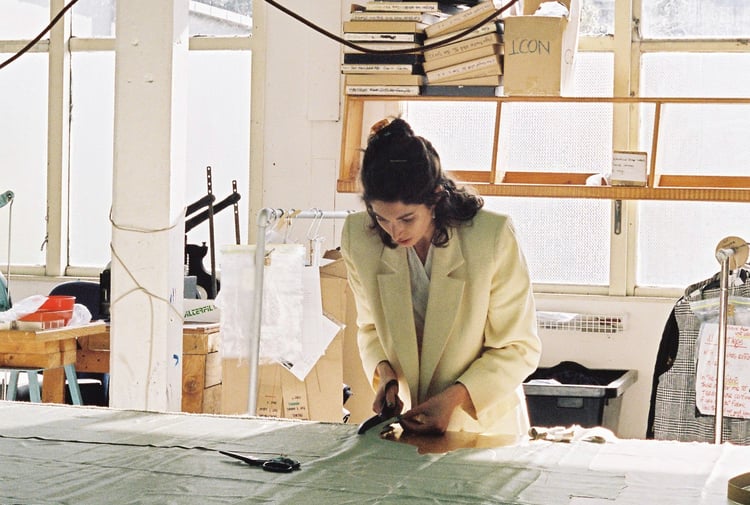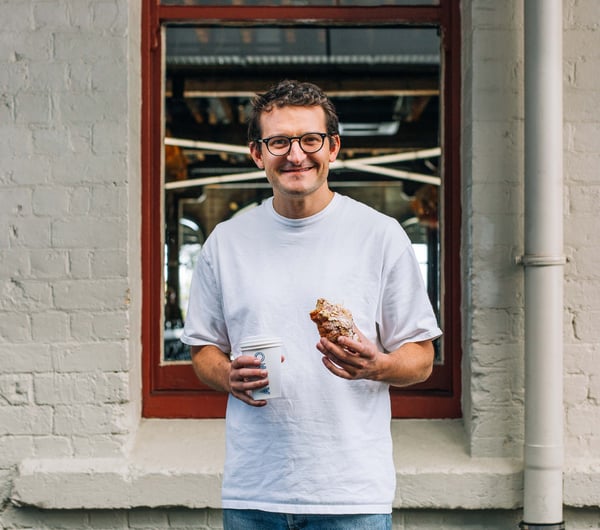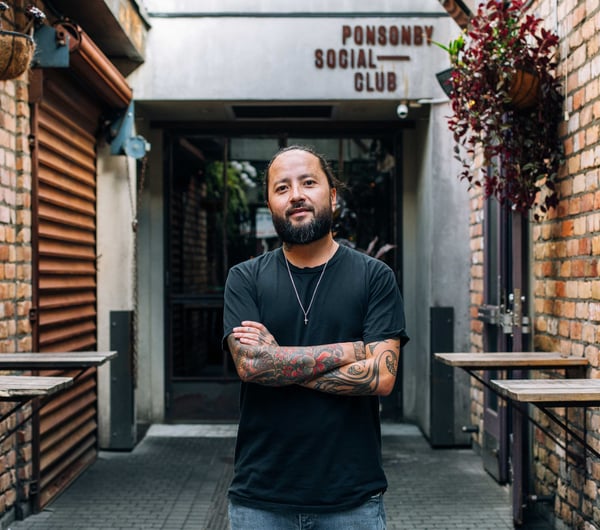Transcending Essentials

Rachel Mills
Mount Eden-based designer Rachel Mills has made a name for herself as the go-to pattern maker for the likes of Trelise Cooper, Stolen Girlfriends Club, Karen Walker, and others.
Brought to you by Counter Journal, NZ’s newest independent magazine featuring the most interesting stories you never knew you wanted to read. Find out more at counterjournal.co.nz.
Rachel's interest in fashion started at a really young age, “My mum is a sewing teacher, and my Gran is an incredible craftswoman, so growing up I was always surrounded by everything homemade and handmade.” Eco-minded and focused on sustainability in her work, Rachel also manages her own label, Rachel Mills.
For your eponymous label you are challenging fashion industry standards in many ways, including avoiding the traditional seasonal release framework in favour of an ‘ongoing’ collection. Tell us about how this better serves your ethos and creative process?
An ongoing collection fits our ethos of longevity. The intention is that pieces are not trend-based, and are made with the utmost care so they can be worn for years to come. We are in the process of shifting toward a made-to-order model as we now have the facilities to do this, which to me goes perfectly with what we are all about.
As a go-to pattern maker for some of Aotearoa’s biggest fashion names, what are some of the ways you apply your own sustainability/ethical practices to this client work?
This is a really difficult one, because as a pattern maker you need to meet someone else’s brief. I have no control over any of the materials used, so instead I channel my energy into creating a really well made, well cut garment, and encourage finishings that will see the garments stand the test of time.
What are some of the challenges you face balancing your own fashion label and the work you do for other brands?
Time is never on my side! Most of the time I am booked up with client’s work, so I have had to restructure my brand in a way that doesn’t require my full attention. Because I don’t have the time to be constantly churning out new styles, it means that there is a smaller offering of more considered pieces.
With your recent announcement you’ll be taking over Auckland clothing production business The Pattern Table, what does this mean for you and how will this impact the local clothing production industry?
There might not be many people who can resonate with this, but to me taking over a garment manufacturing house is like a dream come true. I’ve always been interested in the actual making of garments, and this means I now have the facilities to be closer to this process, and on a bigger scale. I definitely want to build it up to be something larger than it is now, and if I can get my hands on more people who are interested in being a part of this process I think it could happen. My intention is to service the local fashion industry by making people who have quality manufacturing skills more accessible.
Do you believe local manufacturing is making a comeback?
I do believe so yes, but I’m unsure whether it will ever be accessible at all price brackets. When manufacturing went offshore, the sudden accessibility of cheap labour meant prices dropped hugely and meant everyday people could afford to buy more options for their wardrobe than before. Now, people’s expectations of what a garment should cost are so skewed; local manufacturing seems to be something that is reserved only for those who choose to be aware of the exploitation that takes place with some offshore manufacturing.
You don’t use materials without an eco-conscious supply chain such as elastic and zips, which I imagine has its challenges among the many benefits. What needs to change in the industry to ensure suppliers take more responsibility for their production and raw material sourcing?
I know there are people out there working to put standards in place, but until then I’ll choose not to take part in it with my own brand. More business owners need to be asking the questions of where does it come from, who is involved in the supply chain? And if it is something they can’t do without, how can we work together to improve this?
What goes into making a pattern from scratch?
It usually starts with a consultation; one of the most important things is having an understanding of the brand, their aesthetic and how it all translates into a garment. Often the designer will have existing garment that they like certain aspects of, whether it is the shape or particular details or finishing, and we work together to come up with a brief. From here, I get to work. Most of my patterns are taken from a plain dress block, it is all about knowing which shape, scale, proportions and finishings to apply, how much fullness to add, where they want the seams to go, what they want to do about bust shaping, etc.
Usually a working pattern is created, then each pattern piece is traced off that with seam allowances added and templates created for things like buttonholes. Some clients like to mock their garments up, others prefer to go straight to a finished sample. Sometimes there is a bit of back and forth before something is approved, but usually first time works!
How do you ensure your patterns generate little to no waste?
This is actually pretty hard to do. For my own brand, some of my patterns are zero waste patterns which means there are no offcuts, but it is a really limiting way of designing and doesn’t translate well into different sizes. There is no easy way to change a pattern to save waste that doesn’t hugely alter the shape and aesthetic of a garment, but when it is done right, it is such a talent. I make the most of certain parts of the excess fabric; I use the selvage of the fabrics in seams that need to be stabilised, then donate any fabric scraps to kindergartens.
Need to know:
Rachel Mills
Deadstock, sustainable and organic fabrics.
www.rachelmills.co.nz
@rachel__mills
Photos supplied

